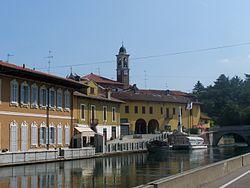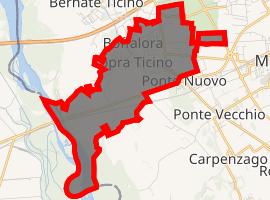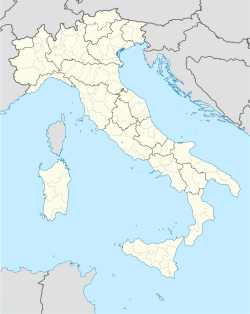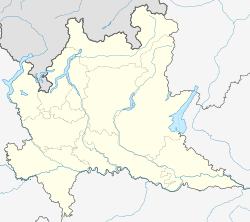Boffalora sopra Ticino | |
|---|---|
| Comune di Boffalora sopra Ticino | |
 A view of the town near the Naviglio Grande. | |
Location of Boffalora sopra Ticino  | |
| Coordinates: 45°28′N 8°50′E / 45.467°N 8.833°E | |
| Country | Italy |
| Region | Lombardy |
| Metropolitan city | Milan (MI) |
| Frazioni | Pontenuovo di Boffalora, Località Magnana |
| Government | |
| • Mayor | Sabina Doniselli |
| Area | |
| • Total | 7.65 km2 (2.95 sq mi) |
| Elevation | 120 m (390 ft) |
| Population (Dec. 2004)[3] | |
| • Total | 4,313 |
| • Density | 560/km2 (1,500/sq mi) |
| Demonym(s) | Boffaloresi |
| Time zone | UTC+1 (CET) |
| • Summer (DST) | UTC+2 (CEST) |
| Postal code | 20010 |
| Dialing code | 02 |
| Website | Official website |
Boffalora sopra Ticino (Milanese: Boffalòra [bufaˈlɔra]) is a comune (municipality) in the Metropolitan City of Milan in the Italian region Lombardy, located about 25 kilometres (16 mi) west of Milan.
Boffalora sopra Ticino borders the following municipalities: Marcallo con Casone, Bernate Ticino, Magenta, Trecate, Cerano.
History
Boffalora sopra Ticino was the site of a small battle in the 1859 Second Italian War of Independence. It was one of the first locations in what had been up to then Austrian territory to be captured by a French army which crossed the Ticino after the Battle of Montebello.
Notable people
- Alfredo Colombo, football player
References
- ^ "Superficie di Comuni Province e Regioni italiane al 9 ottobre 2011". Istat. Retrieved 16 March 2019.
- ^ "Popolazione Residente al 1° Gennaio 2018". Istat. Retrieved 16 March 2019.
- ^ All demographics and other statistics: Italian statistical institute Istat.
External links

